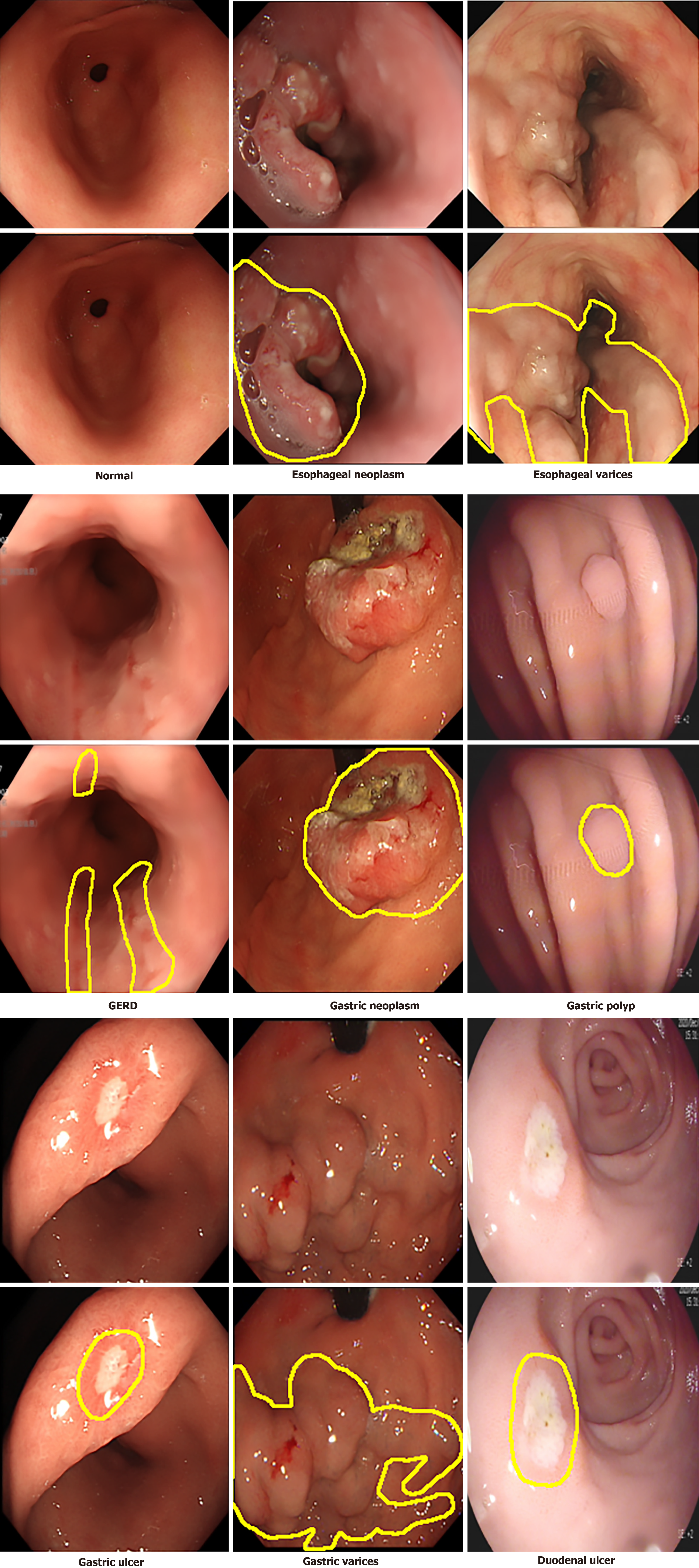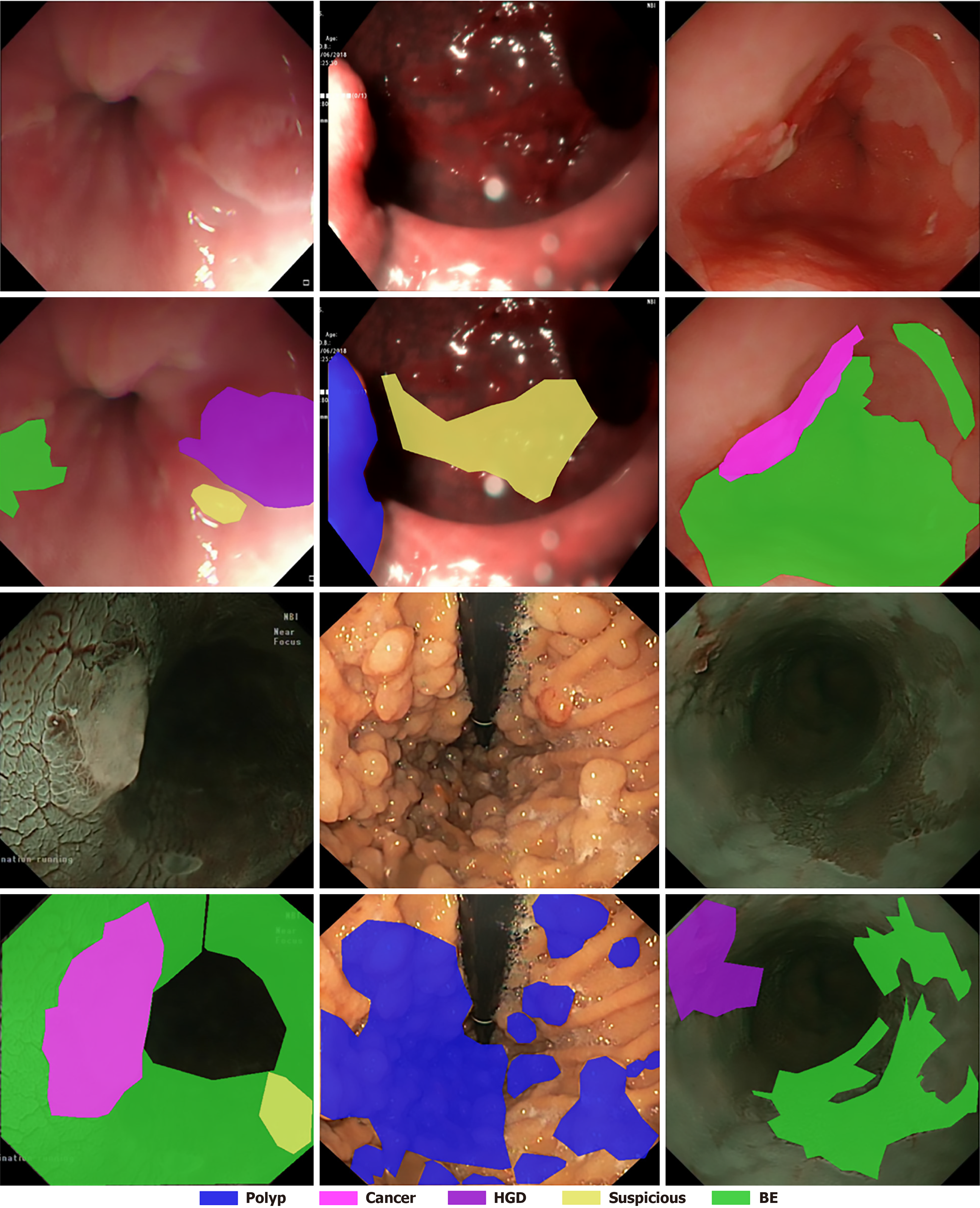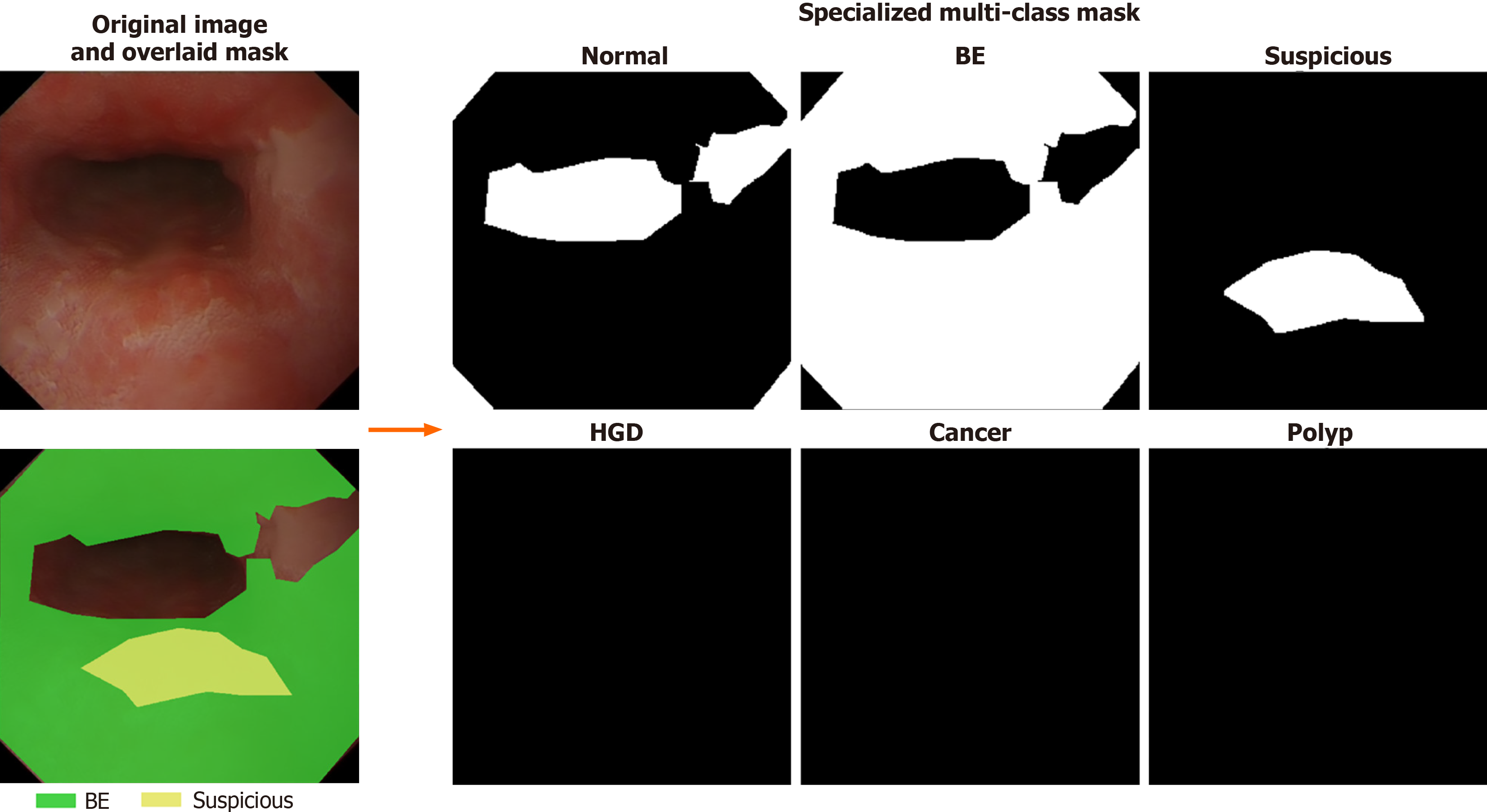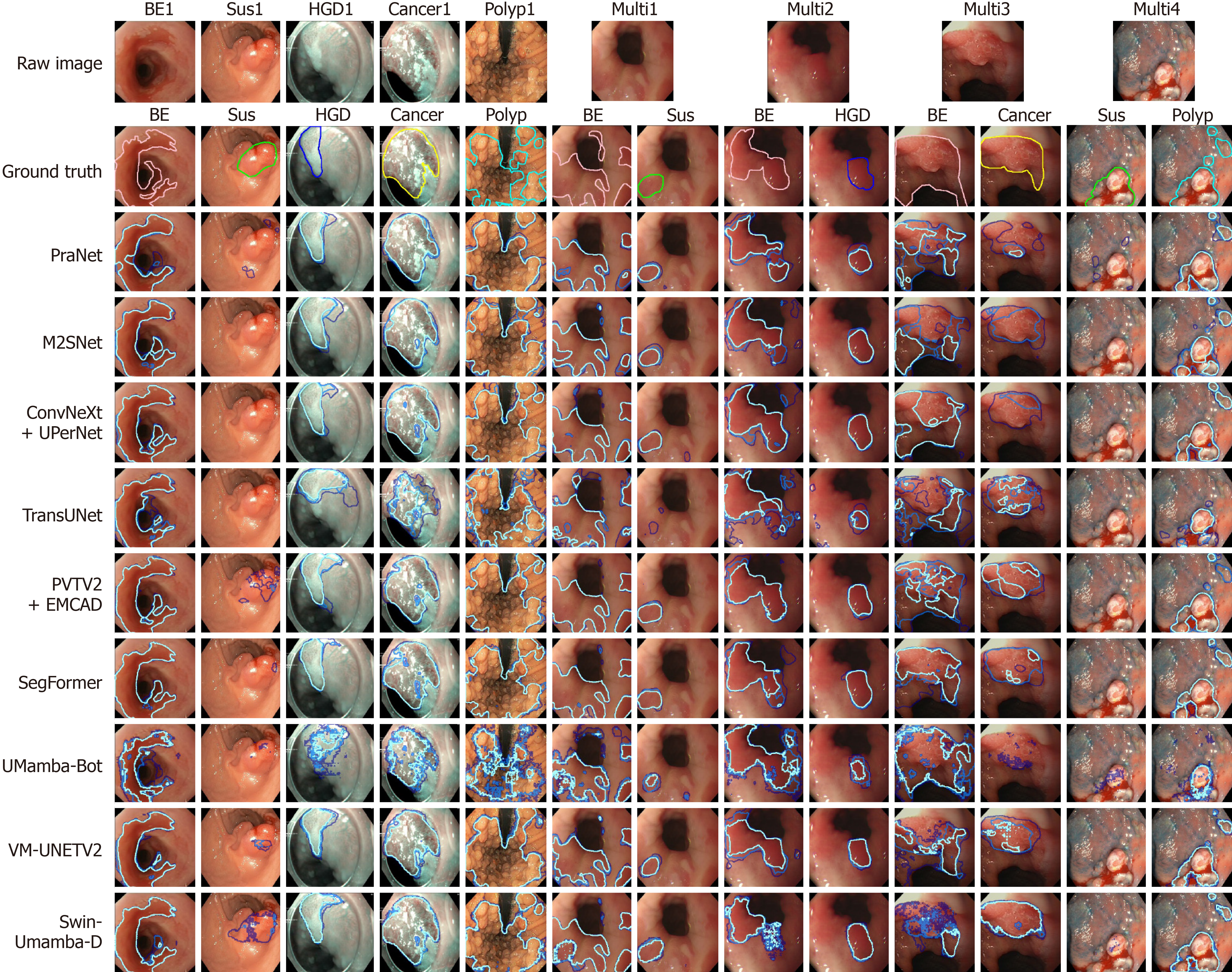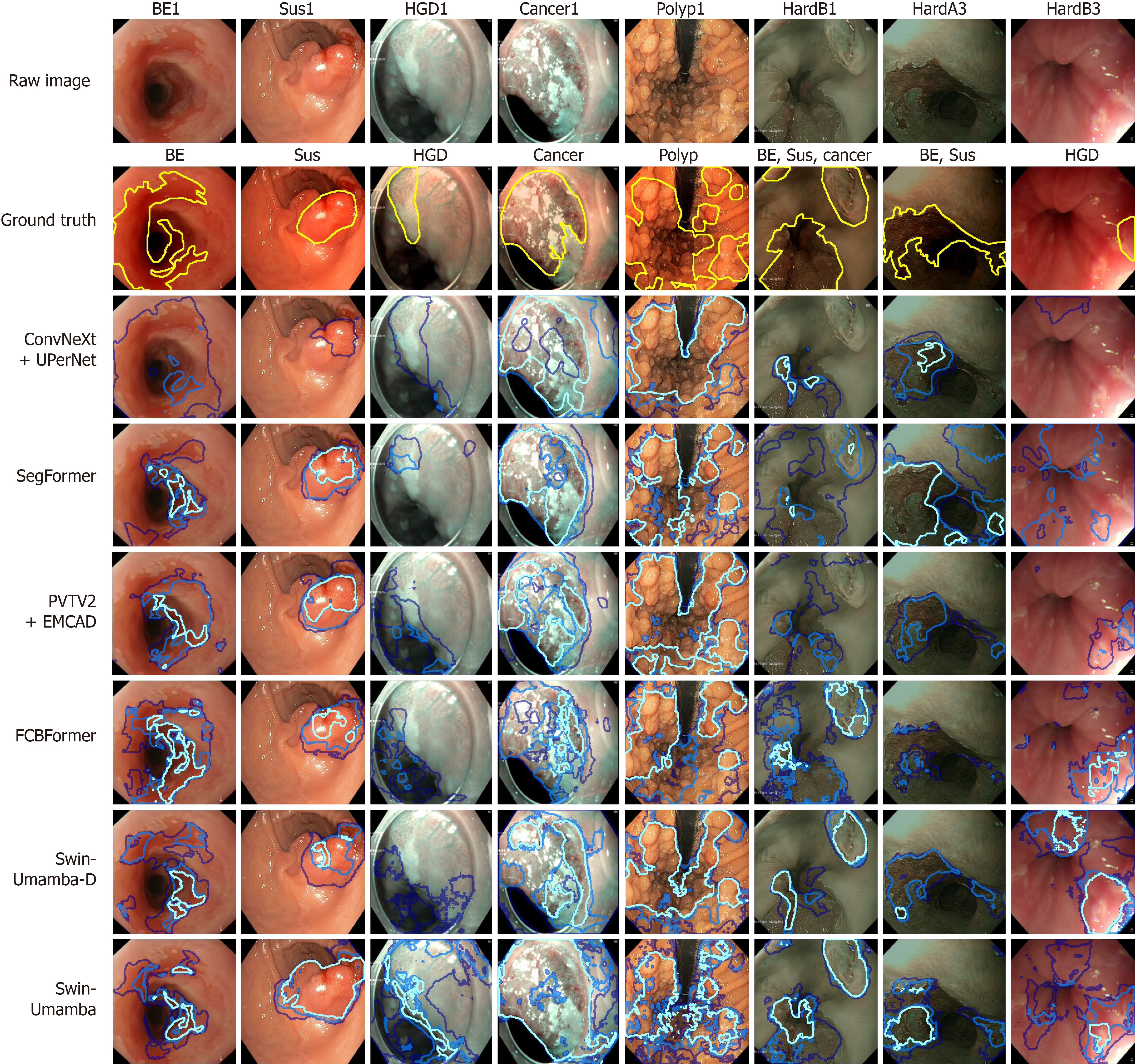Copyright
©The Author(s) 2025.
World J Gastroenterol. Nov 7, 2025; 31(41): 111184
Published online Nov 7, 2025. doi: 10.3748/wjg.v31.i41.111184
Published online Nov 7, 2025. doi: 10.3748/wjg.v31.i41.111184
Figure 1 Examples of images with different illumination conditions.
The top row contains images with normal lighting, while the middle row contains images with low lighting, and the bottom row contains images that are partially overexposed.
Figure 2 Representative images of the 9 disease classes from the self-collected dataset.
GERD: Gastroesophageal reflux disease.
Figure 3 Details of the self-collected dataset.
A: Number of images in each class; B: Data distribution of each class. GERD: Gastroesophageal reflux disease.
Figure 4 Example images and their masks of the EDD2020 dataset.
HGD: High-grade dysplasia; BE: Barrett’s esophagus.
Figure 5 Visualization of the specialized multi-class mask for the EDD2020 dataset.
HGD: High-grade dysplasia; BE: Barrett’s esophagus.
Figure 6 Examples of segmentation output visualizations of the top-two- and worst-performing models of each model category on the self-collected dataset.
Light blue: Fully overlapping regions; Medium blue: Two-map overlaps; Dark blue: Single-map regions; Yellow: Ground truth lesions; SETR: Segmentation transformer; MLA: Multi-level feature aggregation; PVTV2: Pyramid vision transformer v2; EMCAD: Efficient multi-scale convolutional decoding; N: Normal; EN: Esophageal neoplasm; EV: Esophageal varices; GERD: Gastroesophageal reflux disease; GN: Gastric neoplasm; GP: Gastric polyp; GU: Gastric ulcer; GV: Gastric varices; DU: Duodenal ulcer.
Figure 7 Examples of segmentation output visualizations of the top-two- and worst-performing models of each model category on the EDD2020 dataset.
Light blue: Fully overlapping regions; Medium blue: Two-map overlaps; Dark blue: Single-map regions; Pink: Barrett’s esophagus ground truth masks; Lime: Suspicious regions ground truth masks; Blue: High-grade dysplasia ground truth masks; Yellow: Cancer; PVTV2: Pyramid vision transformer v2; Sus: Suspicious precancerous lesions; EMCAD: Efficient multi-scale convolutional decoding; HGD: High-grade dysplasia; BE: Barrett’s esophagus.
Figure 8 Representative examples of these challenging cases with predicted masks generated by the top-performing models.
Light blue: Fully overlapping regions; Medium blue: Two-map overlaps; Dark blue: Single-map regions; Yellow (self-collected): Ground truth lesions; Pink: Barrett’s esophagus ground truth masks; Lime: Suspicious regions ground truth masks; Blue: High-grade dysplasia ground truth masks; Yellow (EDD2020): Cancer; HardA: Hard examples from self-collected dataset; HardB: Hard examples from EDD2020 dataset; GERD: Gastroesophageal reflux disease; DU: Duodenal ulcer; GN: Gastric neoplasm; EV: Esophageal varices; HGD: High-grade dysplasia; Sus: Suspicious precancerous lesions; BE: Barrett’s esophagus.
Figure 9 Examples of segmentation output visualizations of different models for the cross-dataset evaluation.
Light blue: Fully overlapping regions; Medium blue: Two-map overlaps; Dark blue: Single-map regions; Yellow: Ground truth lesions; HardB: Hard examples from EDD2020 dataset; PVTV2: Pyramid vision transformer v2; Sus: Suspicious precancerous lesions; EMCAD: Efficient multi-scale convolutional decoding; HGD: High-grade dysplasia; BE: Barrett’s esophagus.
- Citation: Chan IN, Wong PK, Yan T, Hu YY, Chan CI, Qin YY, Wong CH, Chan IW, Lam IH, Wong SH, Li Z, Gao S, Yu HH, Yao L, Zhao BL, Hu Y. Assessing deep learning models for multi-class upper endoscopic disease segmentation: A comprehensive comparative study. World J Gastroenterol 2025; 31(41): 111184
- URL: https://www.wjgnet.com/1007-9327/full/v31/i41/111184.htm
- DOI: https://dx.doi.org/10.3748/wjg.v31.i41.111184














